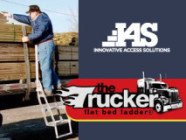At the Safety & Numbers blog, we spend a lot of time writing about work safety, fall protection, industry news, small business safety policy, etc. etc. etc. The truth is though, we typically gather our information from the same place you do… the worldwide web. We just try to package it in digestable morsels and hit the high notes to keep you informed on the go.
So today I am happy to introduce a new blog post category for your enjoyment… ‘What We Found Today’ is intended to cut through the muck and get right down to the business of sharing information that is valuable to you. Without further ado, here is What We Found Today, October 30th, 2014, featuring ladder safety, OSHA News & ANSI guidelines.
New ALI Ladder Safety Website with Training & Interactive Quiz
Have you visited AmericanLadderInstitute.org lately? The site has a new design and content, with updated links to OSHA documents, ANSI A14 documentation, an Online Store, and — of great interest to this blog — a Ladder Safety Training website complete with a Safety Quiz. The Ladder Safety Training site provides training resources complete with Videos and interactive features such as posting the most recent Top Ladder Quiz scores. And it’s free to register!
2014 Top 10 OSHA Violations finds 2 of the Top 3 in Construction
OSHA recently published the Top 10 OSHA violations in fiscal year 2014. As expected, Fall Protection in Construction held it’s rein on the top position with 6,143 violations. The second highest violation category was Hazard Communication (which we touched on regarding the importance of hazard assessments earlier this month). Scaffolding in Construction came in 3rd with 4,029 violations.
To review the complete Top 10 List for OSHA Violations, visit Safety.BLR.com
ANSI Ratings Explained… for Ladders
We’ve mentioned in previous posts that IAS’s Trucker ladders are rated ANSI Special Duty Type IAA. That may mean a lot to you or that may mean very little, which is why we found this link explaining the ANSI rating system for ladders of particular value. Of course, IAS’s trucking work platforms are also ANSI rated for 3 man / 3,000 lbs. We haven’t found a helpful link for that so you’ll just have to contact us so we can let our technical experts explain.
With that we will leave you to enjoy the Halloween holiday and stay OSHA safe at work.



